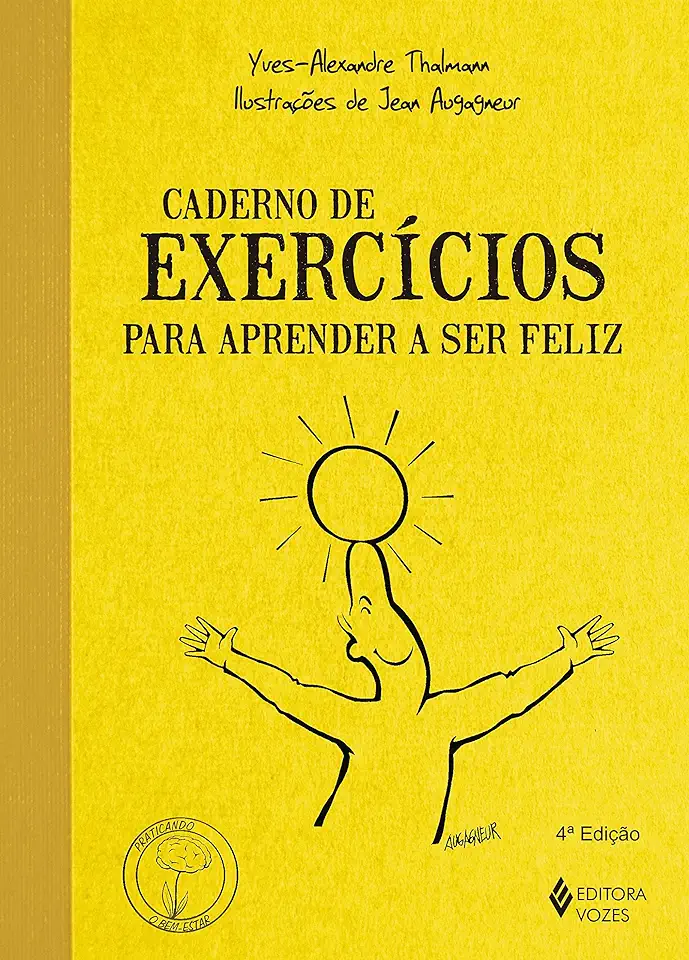
Workbook for Learning to Be Happy - Yves-Alexandre Thalmann
Workbook for Learning to Be Happy: A Comprehensive Guide to Achieving Personal Fulfillment
Introduction
In today's fast-paced and demanding world, finding true happiness can seem like an elusive goal. However, with the right tools and guidance, it is possible to cultivate a more positive and fulfilling life. The "Workbook for Learning to Be Happy" by Yves-Alexandre Thalmann offers a comprehensive and practical approach to help individuals achieve personal fulfillment and lasting happiness.
Understanding Happiness
The book begins by exploring the nature of happiness and its various components. Thalmann argues that happiness is not a fixed state but rather a dynamic process that requires conscious effort and self-awareness. He identifies key factors that contribute to happiness, such as positive relationships, personal growth, and a sense of purpose.
Overcoming Obstacles to Happiness
Recognizing the challenges that can hinder happiness, Thalmann addresses common obstacles such as negative thinking patterns, stress, and anxiety. He provides practical strategies and exercises to help readers overcome these obstacles and cultivate a more positive mindset.
Building Blocks of Happiness
The workbook is structured around six essential building blocks of happiness:
Self-Esteem and Self-Confidence: Thalmann emphasizes the importance of developing a strong sense of self-worth and self-belief. He offers exercises to help readers identify and challenge negative self-perceptions and build a more positive self-image.
Positive Relationships: The book explores the crucial role of healthy relationships in fostering happiness. Thalmann provides guidance on building strong connections with others, resolving conflicts, and nurturing supportive friendships and romantic relationships.
Personal Growth and Learning: Thalmann encourages readers to embrace lifelong learning and personal development as key ingredients for happiness. He offers strategies for setting goals, overcoming challenges, and cultivating a growth mindset.
Mindfulness and Presence: The book emphasizes the importance of living in the present moment and practicing mindfulness. Thalmann provides exercises and techniques to help readers cultivate greater awareness, reduce stress, and savor life's simple pleasures.
Gratitude and Appreciation: Thalmann highlights the power of gratitude in enhancing happiness. He encourages readers to practice regular gratitude journaling, focusing on the positive aspects of their lives, and expressing appreciation to others.
Meaning and Purpose: The book concludes by exploring the significance of finding meaning and purpose in life. Thalmann guides readers in identifying their core values, setting meaningful goals, and aligning their actions with their deepest aspirations.
Practical Exercises and Tools
Throughout the workbook, Thalmann provides a wealth of practical exercises, worksheets, and self-reflection prompts. These tools enable readers to apply the concepts and strategies discussed in the book to their own lives, making the learning process interactive and personalized.
Conclusion
The "Workbook for Learning to Be Happy" is an invaluable resource for anyone seeking to improve their well-being and cultivate lasting happiness. With its comprehensive approach, practical exercises, and inspiring insights, this book serves as a roadmap to personal fulfillment and a more joyful life. Embrace the journey of self-discovery and transformation, and discover the power within you to create a life filled with happiness and contentment.